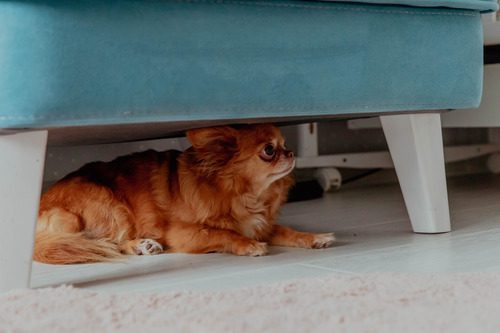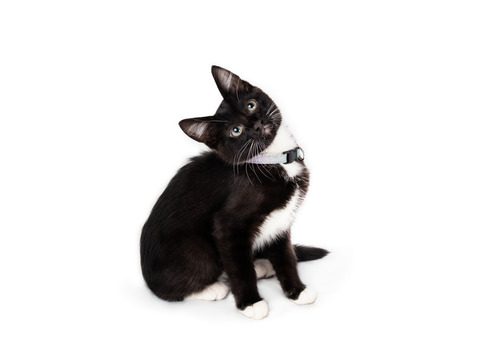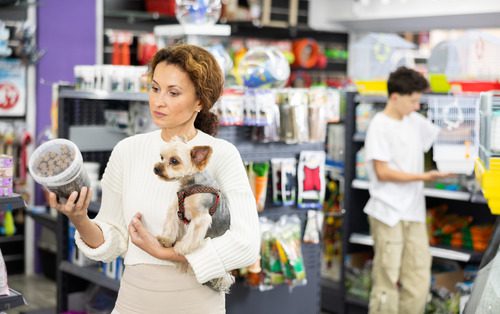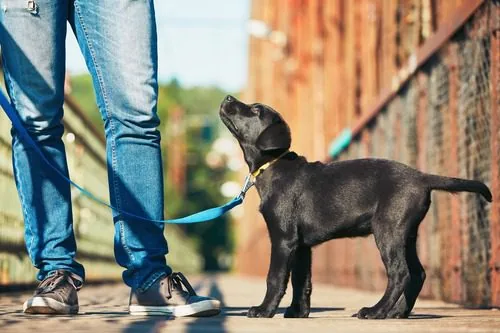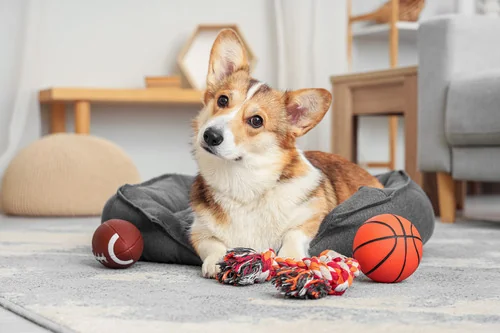Understanding and Preventing Dog Bloat: A Lifesaving Guide
Dog bloat is one of the most serious emergencies a pet owner may face, and it can develop with little warning. Often referred to as gastric dilatation-volvulus (GDV), dog bloat can quickly turn life-threatening if it is not addressed by a veterinarian. While the condition may seem alarming, knowing what it is, what signs to watch for, and how to reduce risks can give pet owners the knowledge they need to protect their pets.
At Brown Veterinary Hospital in Terre Haute, IN, our team emphasizes education so local pet owners can better understand this condition. This blog will explore what dog bloat is, which breeds are most at risk, signs that require immediate veterinary attention, and practical ways to help reduce risk. If you ever notice symptoms of dog bloat, call us at 812-645-0715 right away.
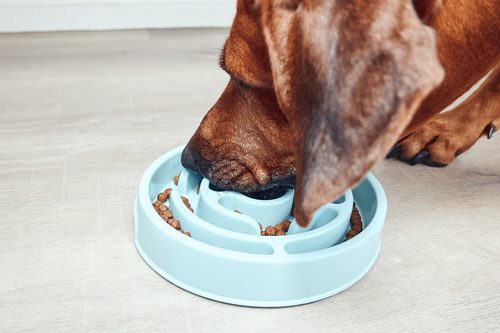
What is Dog Bloat?
Dog bloat, medically known as gastric dilatation-volvulus, occurs when the stomach fills with gas and expands. In many cases, the stomach can twist on itself, trapping gas, food, and fluid inside. This twisting can block blood flow to the stomach and other vital organs, creating a rapidly deteriorating emergency. The swelling of the stomach not only causes pain but can also compress the diaphragm, making it difficult for the dog to breathe. Once the stomach rotates, the condition becomes life-threatening within hours.
Why Dog Bloat is so Dangerous
- The stomach rotation cuts off blood supply.
- Organs can be deprived of oxygen.
- Dogs may go into shock if left untreated.
- Survival depends on immediate veterinary care.
Because of its seriousness, dog bloat is considered one of the most urgent emergencies in veterinary medicine.
Breeds Most at Risk for Dog Bloat
While any dog can experience dog bloat, certain breeds are more predisposed. Larger breeds with deep chests tend to have higher risk due to their anatomy.
High-Risk Breeds
- Great Danes
- German Shepherds
- Standard Poodles
- Boxers
- Weimaraners
- Doberman Pinschers
- Irish Setters
Dogs that are older, underweight, or have relatives that experienced dog bloat may also face increased risk. Pet owners with these breeds should be especially vigilant about early warning signs.
Signs and Symptoms of Dog Bloat
Recognizing dog bloat quickly can make all the difference. Since the condition escalates rapidly, pet owners need to be able to identify the signs as soon as they appear.
Common Symptoms of Dog Bloat
- Distended or swollen abdomen
- Restlessness or pacing
- Unproductive retching (trying to vomit with nothing coming out)
- Excessive drooling
- Signs of discomfort such as whining or panting
- Weakness or collapse
A dog showing these signs should be taken to a veterinarian immediately. Dog bloat is not something that will resolve on its own.
Factors That Contribute to Dog Bloat
While there is no single cause of dog bloat, several factors may contribute to its development. Understanding these can help pet owners reduce risk where possible.
Feeding Practices
- Eating too quickly can increase swallowed air.
- Feeding one large meal per day may increase risk compared to smaller meals.
- Using elevated food bowls may encourage faster eating and increased air intake.
Activity After Eating
- Vigorous exercise immediately after a meal may contribute to stomach movement and twisting.
- Rough play or running should be delayed until digestion has begun.
Other Risk Factors
- Stress and anxiety may affect digestion.
- Older dogs are more likely to experience dog bloat.
- Genetic predisposition is often seen in families of at-risk breeds.
How Veterinarians Diagnose and Treat Dog Bloat
When a dog arrives at Brown Veterinary Hospital with suspected bloat, time is critical. Our veterinarians typically use physical exams and imaging, such as X-rays, to confirm the diagnosis.
Emergency Treatment Steps
- Stabilizing the dog with fluids and oxygen.
- Releasing the trapped gas in the stomach.
- Surgery to untwist the stomach and return it to its normal position.
- In some cases, a gastropexy may be performed, which involves attaching the stomach to the abdominal wall to prevent future twisting.
Because surgery is often necessary, immediate veterinary care is the only way to save a dog suffering from bloat.
Preventing Dog Bloat: What Pet Owners Can Do
While no prevention method is guaranteed, certain habits may reduce the chances of dog bloat developing.
Feeding Habits That May Help
- Divide meals into two or three smaller portions instead of one large meal.
- Use slow-feed bowls to discourage rapid eating.
- Avoid feeding immediately before or after heavy exercise.
Lifestyle Considerations
- Keep stress low, especially during mealtimes.
- Provide regular but moderate exercise.
- Monitor for early signs, especially in at-risk breeds.
Veterinary Guidance
Veterinarians may discuss preventive surgery (prophylactic gastropexy) for high-risk breeds. This can sometimes be performed at the same time as a spay or neuter procedure.
Signs It’s Time to Call Brown Veterinary Hospital
Pet owners should never wait if they suspect dog bloat. Even a short delay can reduce the chances of survival. At Brown Veterinary Hospital in Terre Haute, IN, our experienced team is ready to respond quickly to emergencies. If you notice your dog showing signs of dog bloat such as a swollen abdomen, unproductive retching, or sudden distress, call us at 812-645-0715 right away. Acting fast could save your dog’s life.
Recent Posts
About Brown Veterinary Hospital
We are here to serve as your partner in keeping your four-legged family member healthy, ensuring you have all the tools you need to provide them with a lifetime of outstanding care. Our animal hospital in Terre Haute offers a full range of services to nurture and extend your pet’s life, from wellness and preventative care to critical care, exotic pet care, and dermatology.

